- Joined
- Jul 27, 2009
- Messages
- 4,088
If you visit an online diamond forum, or otherwise use the internet to do your due diligence when shopping for a diamond, you have probably come across the term light performance. Most people think of fine diamonds as having brilliance and fire, and these are clearly fundamental attributes of diamond beauty. But is there more to this concept of light performance, or is it just something inherent to all diamonds by virtue of their unique physical properties?
Brilliance and fire are terms we have all heard forever in describing diamond beauty, and we tend to think about them interchangeably. But if you actually break the terms down you find that that they are distinct attributes. And you discover that they are driven by components such as contrast, brightness, leakage and scintillation that taken together result in the fire and brilliance we perceive. A diamond is essentially a tiny sculpture of mirrors, and like an orchestra performing a piece of music, the system of mirrors in a diamond act on light rays to create a visual performance. And all the visual “instruments” need to be in alignment for that performance to be to be worthy of an ovation!
Like an orchestra, diamonds can perform different styles of visual performance depending on their shape and facet configurations. The same shape and facet configuration can also deliver different flavors depending on specific details of their proportions and facet angles.
How far down this rabbit hole should I go?
Everybody is different when it comes to how technical they want to get. But one reason many decide to look deeper into light performance is that most gemological laboratories only offer a basic overall cut grade that does not take into account things like facet precision and 3D symmetry, which can have a significant impact on light performance. And when it comes to fancy shape diamonds (non-round shapes such as oval, cushion, radiant, etc), most laboratories including GIA, provide no overall cut grade on their reports. So a shopper is forced to make an assessment independent of laboratory guidance.
Tools for Light Performance Assessment
There are a number of tools that provide more information about a diamond’s light performance than can be gleaned from a laboratory report.
ASET is a tool developed by AGS Laboratories that informs visually about how a diamond is handling light, showing brightness, contrast, and light leakage in a color coded graphical display. *Note: AGS Laboratories was recently acquired by GIA.
IdealScope is a slightly narrower view of diamond light return, light leakage, and contrast that is most widely used on round brilliant diamonds. Being less complex than ASET it is also somewhat easier to interpret.
Hearts and Arrows is a tool to assess a round diamond’s optical precision. Only when all facets are aligned properly in three dimensions will a precise pattern of hearts (from table view) and arrows (from pavilion view) be exhibited.
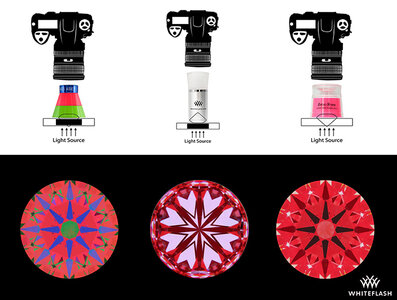
Fancy Shape Assessment
When it comes to fancy shapes, cut quality assessment is uncharted territory to a large extent. As mentioned, the world’s best known gem laboratory (GIA) does not yet provide an overall cut grade on non-round shapes (*with their acquisition of AGS Laboratories light performance-based cut grading technology this is evolving). Some laboratories that do provide cut grading use parameter-based methods that do not take into account the contributions of all facets, or factor in things like 3D facet alignment. Small differences in facet angles, pointing direction (azimuth) and length to width ratio can have significant impacts of light performance in fancies.
Online tools and cut estimators use parameters found on lab reports, which are themselves rounded and averaged, to peg a cut grade to a predefined table. This is not a direct assessment and is only capable of eliminating known bad parameters. The best among them for round diamonds, and the only one transparent about its methodology, is the Holloway Cut Advisor (HCA). But within a broad range that “pass” these tools, more information (e.g an IdealsScope image) is still necessary to have a firm enough grasp on actual light performance to make an informed decision.
While ASET can provide important information about how a fancy shape is handling light, learning to interpret widely varied ASET signatures for different shapes and facet configurations is something few people have the experience to do well.

The Importance of High Quality Video
For diamonds of all shapes, high quality video is essential to shopping online. Not only can you see clarity features, but you can see aspects of the diamond’s facet structure and light performance in motion. This gives you the ability to assess things like eye-clean and bowtie, and to identify different flavors of light performance such as ‘crushed ice’.
But the value of both video and advanced light performance imaging is hampered by lack of uniformity across the web. The process can vary dramatically from website to website, as well as the execution. In many cases it adds little or no value in understanding the nuances of cut quality.
Video taken in both diffuse and spot lighting environments is particularly helpful as you can see the diamond’s clarity features as well as its brightness and potential for fire.
Transparency and Light Performance
As more diamond shoppers have begun to appreciate the critical role cut quality plays in the beauty of diamonds, many have become obsessed with finding the perfect cut. And this is a worthy goal, considering how important precision cutting is to the magical beauty of diamond. But one thing that is generally overlooked by shoppers seeking out diamonds with optimal light performance is transparency. We naturally think of diamonds as a transparent material, but clarity features can sometimes diminish a diamond’s ability to fully propagate light and in some cases render a diamond hazy and lifeless, even if perfectly cut. This happens in both lab grown and natural diamonds. To date, no gemological laboratory is providing a measure or grade for diamond transparency.
Lab grown diamond production today is mostly in the upper clarity grades, but two things can still cause a lab diamond to have compromised transparency; strain and striation. These issues arise from irregularities in the carbon lattice during the growth process and can leave a diamond, even one with a high clarity grade, with a subtle blurriness that prevents the material from achieving optimal performance. With natural diamonds it is usually clarity features that cause diminished transparency, and it is usually in the Si and below grades where we see this problem. Light scattering inclusion types like twinning wisps, graining and clouds (especially in combination) can conspire to rob a diamond of its crispness, no matter how well cut.
Transparency is not a yes/no proposition but rather like color, clarity and fluorescence, is a factor on a continuum. In many cases the effect is subtle enough to require a trained eye to accurately assess. The diamond on the left below has diminished transparency causing it to be slightly hazy. Photos such as this one taken in diffused light from above show only slight difference in transparency. Directional lighting from the side tends to show the effect more readily. *None of the gemological laboratories currently measure or grade transparency on their reports.
Shopping for Top Performers without having to get an Advanced Degree in Gemology
Most shoppers fall into the category of being motivated to get the most beautiful stone but without wanting to dedicate an undo portion of their lives to the process! The best approach is to use the convenient cut estimator tools, such as the HCA, as “rejection tools” to eliminate candidates with known proportion faults. Then request advanced light performance images to acquire more information about how the diamond is handling light and how precisely it is faceted, with the understanding that the particular merchant may or may not be able to supply them. And finally, as is always a good approach anytime you are shopping for an important product, deal with a merchant you can trust and who has the expertise and reputation for customer care that will give you confidence in your purchase.
Brilliance and fire are terms we have all heard forever in describing diamond beauty, and we tend to think about them interchangeably. But if you actually break the terms down you find that that they are distinct attributes. And you discover that they are driven by components such as contrast, brightness, leakage and scintillation that taken together result in the fire and brilliance we perceive. A diamond is essentially a tiny sculpture of mirrors, and like an orchestra performing a piece of music, the system of mirrors in a diamond act on light rays to create a visual performance. And all the visual “instruments” need to be in alignment for that performance to be to be worthy of an ovation!
Like an orchestra, diamonds can perform different styles of visual performance depending on their shape and facet configurations. The same shape and facet configuration can also deliver different flavors depending on specific details of their proportions and facet angles.
How far down this rabbit hole should I go?
Everybody is different when it comes to how technical they want to get. But one reason many decide to look deeper into light performance is that most gemological laboratories only offer a basic overall cut grade that does not take into account things like facet precision and 3D symmetry, which can have a significant impact on light performance. And when it comes to fancy shape diamonds (non-round shapes such as oval, cushion, radiant, etc), most laboratories including GIA, provide no overall cut grade on their reports. So a shopper is forced to make an assessment independent of laboratory guidance.
Tools for Light Performance Assessment
There are a number of tools that provide more information about a diamond’s light performance than can be gleaned from a laboratory report.
ASET is a tool developed by AGS Laboratories that informs visually about how a diamond is handling light, showing brightness, contrast, and light leakage in a color coded graphical display. *Note: AGS Laboratories was recently acquired by GIA.
IdealScope is a slightly narrower view of diamond light return, light leakage, and contrast that is most widely used on round brilliant diamonds. Being less complex than ASET it is also somewhat easier to interpret.
Hearts and Arrows is a tool to assess a round diamond’s optical precision. Only when all facets are aligned properly in three dimensions will a precise pattern of hearts (from table view) and arrows (from pavilion view) be exhibited.

Fancy Shape Assessment
When it comes to fancy shapes, cut quality assessment is uncharted territory to a large extent. As mentioned, the world’s best known gem laboratory (GIA) does not yet provide an overall cut grade on non-round shapes (*with their acquisition of AGS Laboratories light performance-based cut grading technology this is evolving). Some laboratories that do provide cut grading use parameter-based methods that do not take into account the contributions of all facets, or factor in things like 3D facet alignment. Small differences in facet angles, pointing direction (azimuth) and length to width ratio can have significant impacts of light performance in fancies.
Online tools and cut estimators use parameters found on lab reports, which are themselves rounded and averaged, to peg a cut grade to a predefined table. This is not a direct assessment and is only capable of eliminating known bad parameters. The best among them for round diamonds, and the only one transparent about its methodology, is the Holloway Cut Advisor (HCA). But within a broad range that “pass” these tools, more information (e.g an IdealsScope image) is still necessary to have a firm enough grasp on actual light performance to make an informed decision.
While ASET can provide important information about how a fancy shape is handling light, learning to interpret widely varied ASET signatures for different shapes and facet configurations is something few people have the experience to do well.

The Importance of High Quality Video
For diamonds of all shapes, high quality video is essential to shopping online. Not only can you see clarity features, but you can see aspects of the diamond’s facet structure and light performance in motion. This gives you the ability to assess things like eye-clean and bowtie, and to identify different flavors of light performance such as ‘crushed ice’.
But the value of both video and advanced light performance imaging is hampered by lack of uniformity across the web. The process can vary dramatically from website to website, as well as the execution. In many cases it adds little or no value in understanding the nuances of cut quality.
Video taken in both diffuse and spot lighting environments is particularly helpful as you can see the diamond’s clarity features as well as its brightness and potential for fire.
Transparency and Light Performance
As more diamond shoppers have begun to appreciate the critical role cut quality plays in the beauty of diamonds, many have become obsessed with finding the perfect cut. And this is a worthy goal, considering how important precision cutting is to the magical beauty of diamond. But one thing that is generally overlooked by shoppers seeking out diamonds with optimal light performance is transparency. We naturally think of diamonds as a transparent material, but clarity features can sometimes diminish a diamond’s ability to fully propagate light and in some cases render a diamond hazy and lifeless, even if perfectly cut. This happens in both lab grown and natural diamonds. To date, no gemological laboratory is providing a measure or grade for diamond transparency.
Lab grown diamond production today is mostly in the upper clarity grades, but two things can still cause a lab diamond to have compromised transparency; strain and striation. These issues arise from irregularities in the carbon lattice during the growth process and can leave a diamond, even one with a high clarity grade, with a subtle blurriness that prevents the material from achieving optimal performance. With natural diamonds it is usually clarity features that cause diminished transparency, and it is usually in the Si and below grades where we see this problem. Light scattering inclusion types like twinning wisps, graining and clouds (especially in combination) can conspire to rob a diamond of its crispness, no matter how well cut.
Transparency is not a yes/no proposition but rather like color, clarity and fluorescence, is a factor on a continuum. In many cases the effect is subtle enough to require a trained eye to accurately assess. The diamond on the left below has diminished transparency causing it to be slightly hazy. Photos such as this one taken in diffused light from above show only slight difference in transparency. Directional lighting from the side tends to show the effect more readily. *None of the gemological laboratories currently measure or grade transparency on their reports.
Shopping for Top Performers without having to get an Advanced Degree in Gemology
Most shoppers fall into the category of being motivated to get the most beautiful stone but without wanting to dedicate an undo portion of their lives to the process! The best approach is to use the convenient cut estimator tools, such as the HCA, as “rejection tools” to eliminate candidates with known proportion faults. Then request advanced light performance images to acquire more information about how the diamond is handling light and how precisely it is faceted, with the understanding that the particular merchant may or may not be able to supply them. And finally, as is always a good approach anytime you are shopping for an important product, deal with a merchant you can trust and who has the expertise and reputation for customer care that will give you confidence in your purchase.
Last edited:

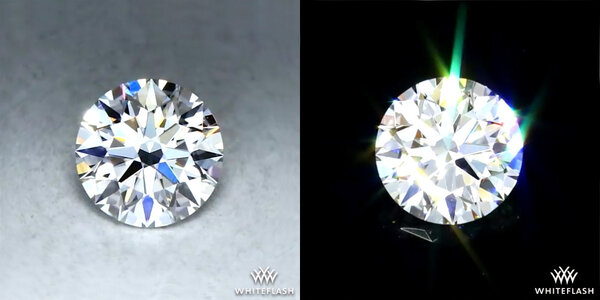
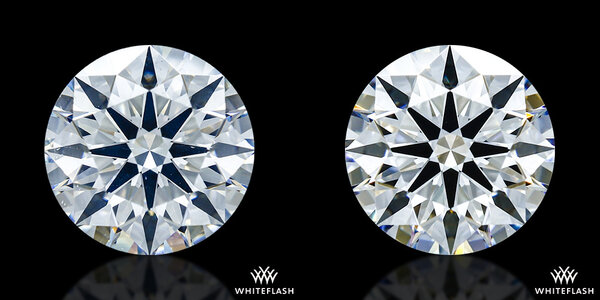







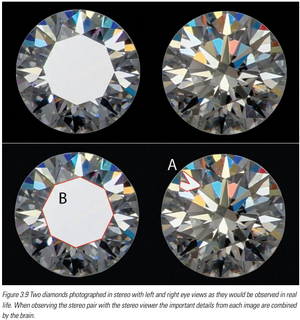
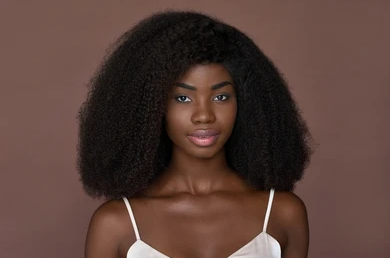



300x240.png)